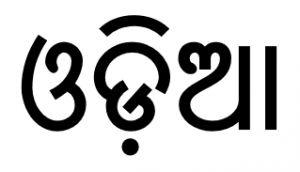Language/Odia/Grammar/Yes/No-Questions
| ◀️ Telling Time — Previous Lesson | Next Lesson — Wh-Questions ▶️ |
Introduction[edit | edit source]
In the previous lessons, you have learned to form basic sentences in Odia. You have learned about the different sentence structures and how to use simple verbs and tenses. In this lesson, you will learn how to form yes/no questions in Odia, and how to respond to them.
Forming Yes/No Questions
Yes/no questions in Odia are questions that can be answered with a simple "yes" or "no". To form a yes/no question in Odia, you simply add the word "କି" (ki) to the end of the sentence.
For example:
| Odia | Pronunciation | English |
|---|---|---|
| ତୁମେ ଖାଇଲା? | tume khaila? | Did you eat? |
| ମୋ ଦାଢୀ କାଟିବ? | mo dhaḍhi kāṭiba? | Will you shave my beard? |
Notice that in the second sentence, the word "କି" (ki) is added at the end of the sentence to turn it into a yes/no question.
Responding to Yes/No Questions
When answering a yes/no question, you can respond with either "ହଁ" (haṅ) or "ନା" (na). "ହଁ" (haṅ) means "yes" and "ନା" (na) means "no".
For example:
- Question: ତୁମେ ଖାଇଲା? (tume khaila?)
- Answer: ହଁ (haṅ) or ନା (na)
- Question: ତୁମେ ଘରେ ଆସିଲେ? (tume ghare āsile?)
- Answer: ହଁ (haṅ) or ନା (na)
When responding with "ହଁ" (haṅ), you can also add an affirmative particle "ହଁଏ" (haṅe) to emphasize your agreement.
For example:
- Question: ସନ୍ଧ୍ୟାରେ ଭକ୍ଷଣ କରିଲା କି? (sandhyāre bhakṣaṇa kariḷa ki?)
- Answer: ହଁଏ (haṅe) or ହଁ (haṅ)
Using Question Words in Yes/No Questions
Question words in Odia, such as "କେଉ" (keu), "କିନାରେ" (kināre), "କେବଳ" (kebala), etc., can also be used to form yes/no questions. To use a question word in a yes/no question, you simply add the word "ନେ" (ne) at the end of the sentence.
For example:
| Odia | Pronunciation | English |
|---|---|---|
| ତୁମେ କୌଣସି କିଛି ଖାଇଲାନ୍ତି? ହେତୁ ଯେଉଁଥି ତୁମେ ଥାକିଥିଲା? | tume kaunasi kiṣa khāilānti? hetu jeuṭhi tume thākithilā? | Did you eat anything there? Because you were there. |
| ସେ କିମ୍ବାବାପେଣ୍ଟ ଗଇଛନ୍ତିକି ନେ? | se kim-bā-penṭa gai-chan-ti ki ne? | Did he go to Kimbapenta? |
Negative Yes/No Questions
Negative yes/no questions are formed by adding the negative particle "ନା" (na) to the beginning of the sentence, followed by the word "କି" (ki) at the end of the sentence.
For example:
- Question: ନାନାକ ମୋଟର୍କୁ ଭଡା ଦିଆନ୍ତି କି? (nānāka mōṭar-ku bhaḍā diyānti ki?)
- Answer: ହଁ (haṅ) or ନା (na)
Notice that in this example, the negative particle "ନା" (na) is added at the beginning of the sentence to indicate a negative question.
Conclusion
Congratulations! You have now learned how to form yes/no questions in Odia and how to respond to them. Keep practicing and trying to use questions in your conversations to improve your fluency in Odia.
| ◀️ Telling Time — Previous Lesson | Next Lesson — Wh-Questions ▶️ |

